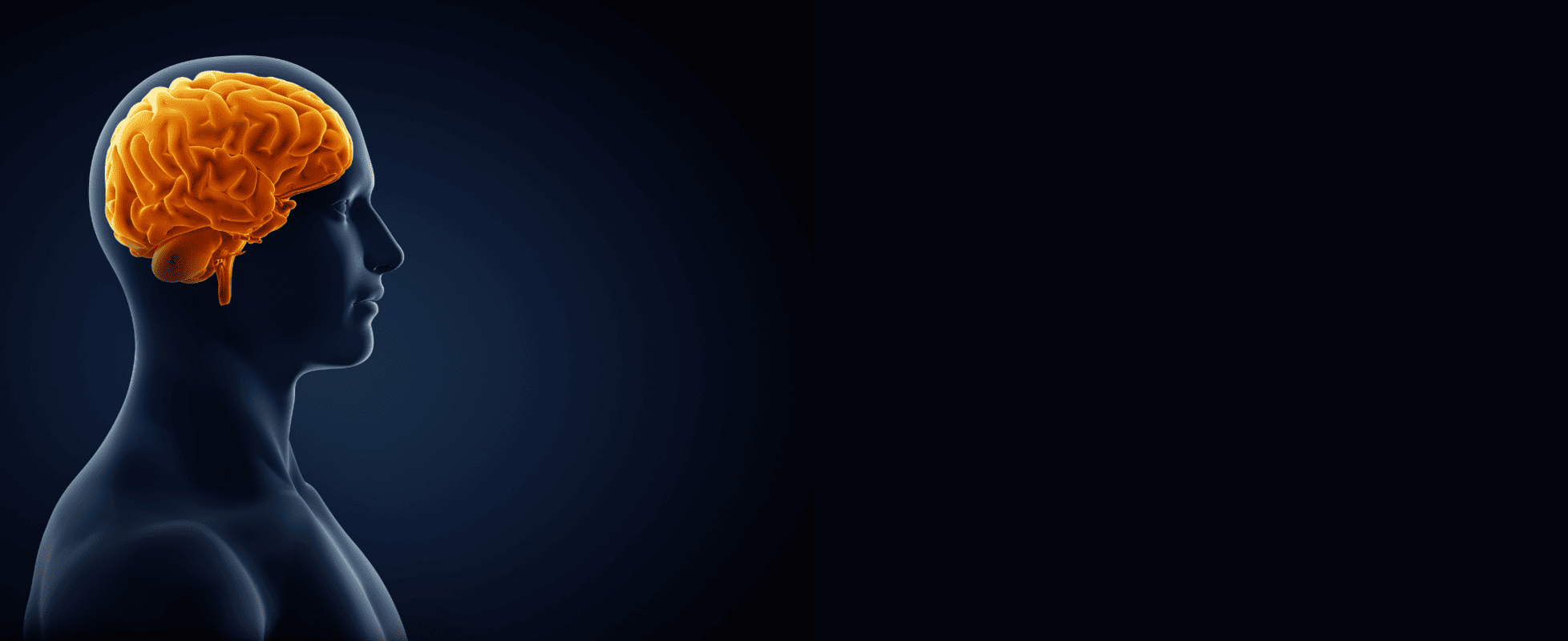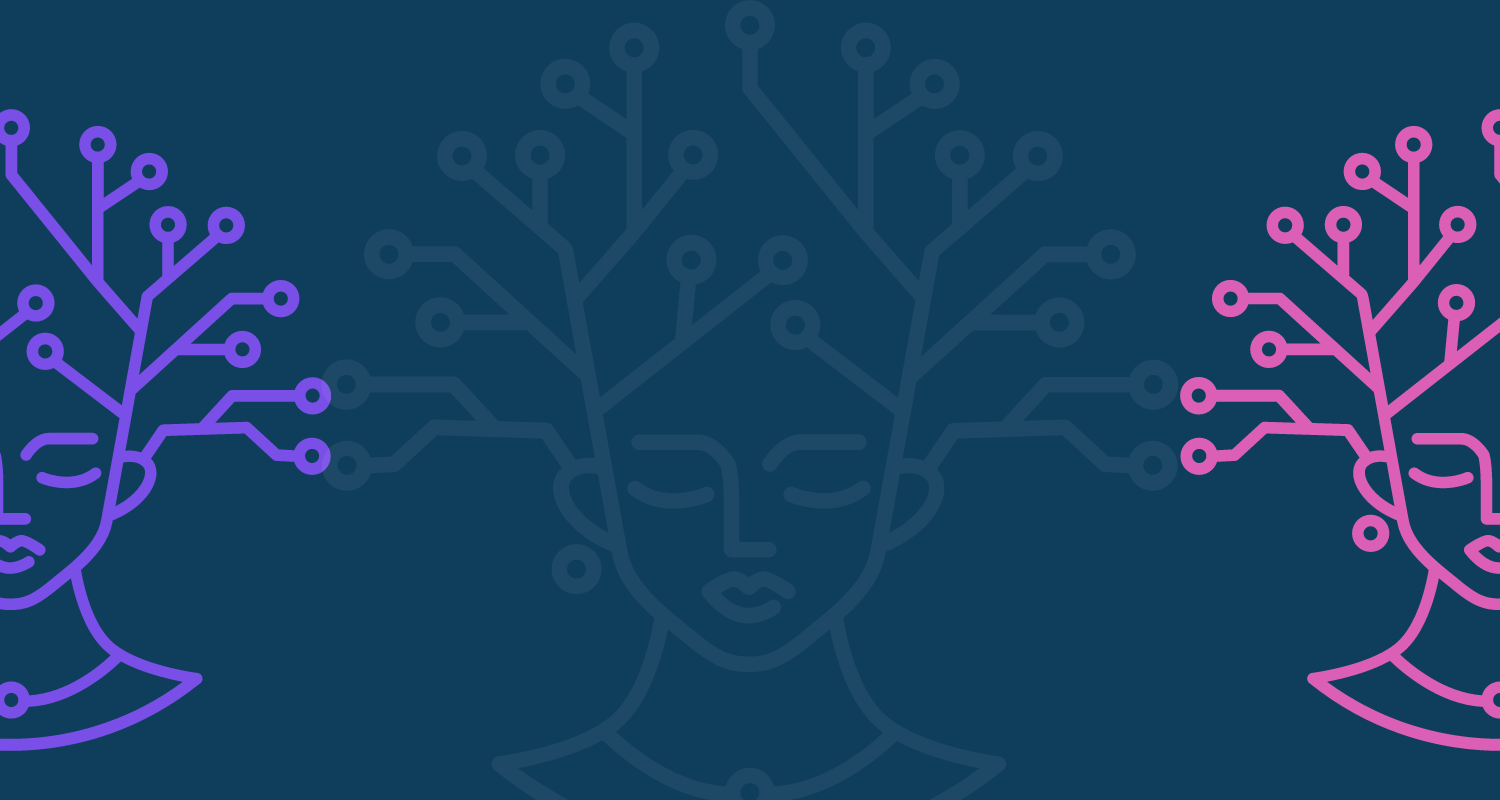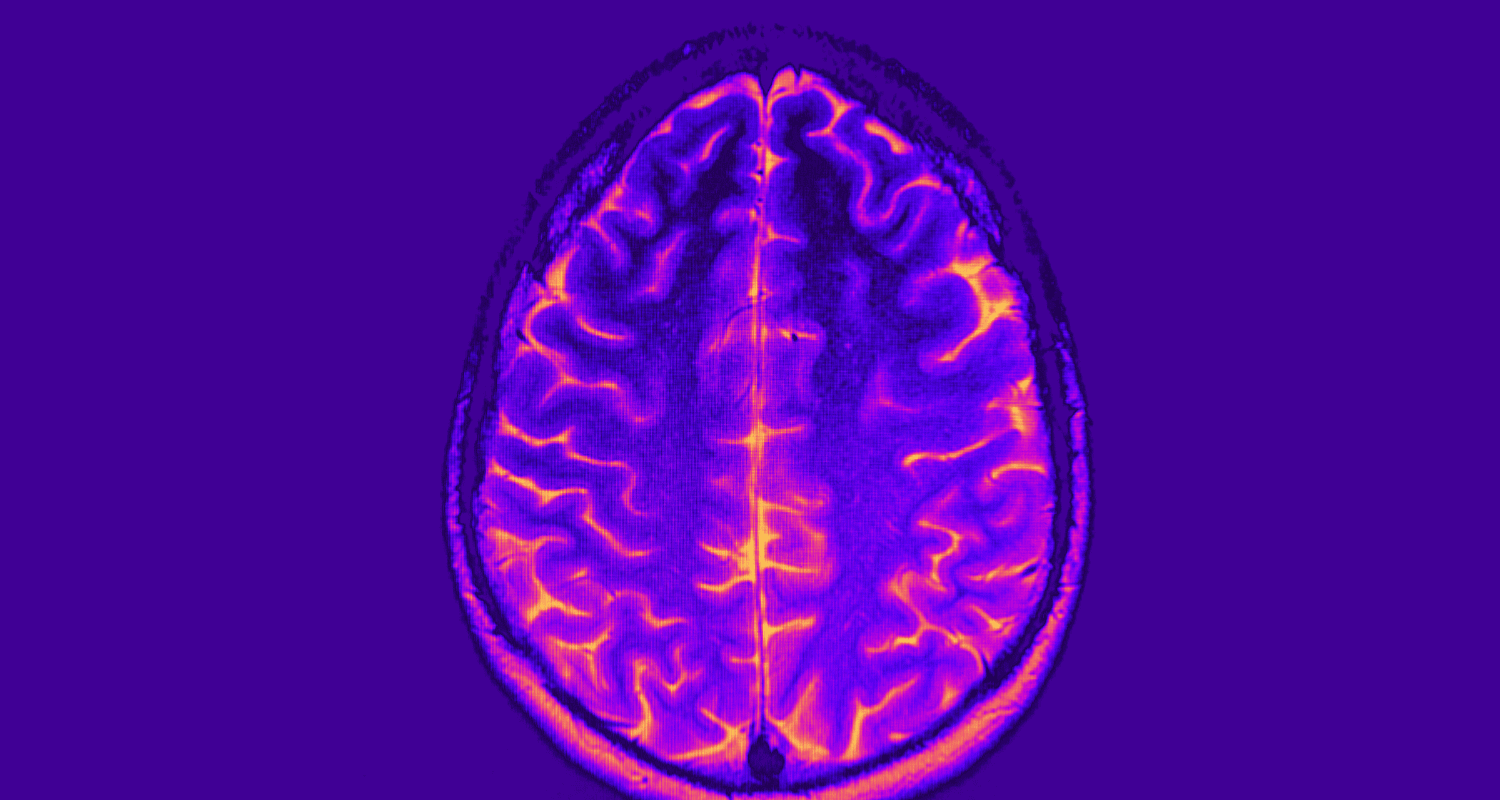Did you know that telemedicine is the most funded category in global digital health? In 2020, the total investment into the telemedicine sector resulted in 4.2 billion dollars. Meanwhile, the mhealth app development funding equals 1.8 billion dollars, taking third place among the top digital health categories. Earlier, the gap between telehealth and mhealth industries was insignificant. Just compare the statistics in the charts below.
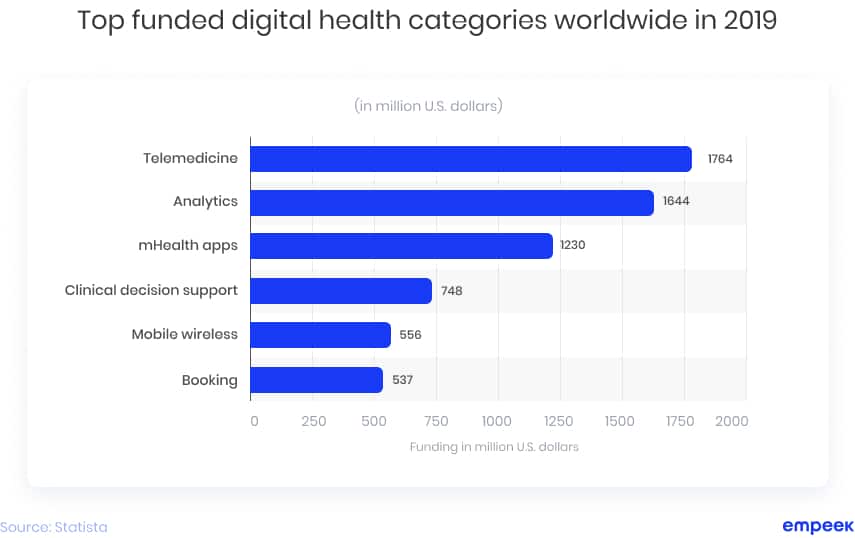
The statistics prove that both mhealth and telemedicine are lucrative health development fields, but only if you know your customer.
Learn your niche before placing the product on the market. Different fields have different trends yet specific weak spots to pay attention to during the development stage. The target audiences might differ yet the customer’s needs too. For instance, what is the difference between mhealth patient engagement solutions and telehealth? Ironically, not all medical tech startups know the answer. This results in badly developed products with no demand on the market. In the end, the startuppers are left with nothing but a failed business strategy.
How do the concepts and purposes of telehealth and mhealth apps differ? How to develop a mhealth app? Can an app be considered a telehealth and mhealth product simultaneously? Which types of mhealth app will be the most beneficial for you business? Find more answers in the article below.
Are You Sure That The Technology Your Company Is Using Doesn’t Hamper Business Growth?
Contact UsDoes mHealth Include Telehealth?
Let’s say that mhealth and telehealth are two full-fledged areas in digital health development. Telehealth services can be delivered through mobile and desktop tools, while mobile devices are required for mhealth solutions. Telehealth development focuses on solving the problems modern clinical settings face. Problems like readmission rates or hospital overload. Yet telehealth is all about providing and improving clinical services, while mhealth apps don’t imply the clinician’s assistance on average.
When a developer creates a mobile version of the desktop software, this is where mhealth and telehealth overlap. Sure, both areas have similar goals like health information exchange, but the devices required for the provision of health services differ. In the end, telehealth software development and mhealth development are two different areas to consider when creating a health app.
Keep reading to learn the essence of an mhealth and telehealth app and find the one that suits your business idea the best.
Read also: What you need to know before starting a telemedicine business
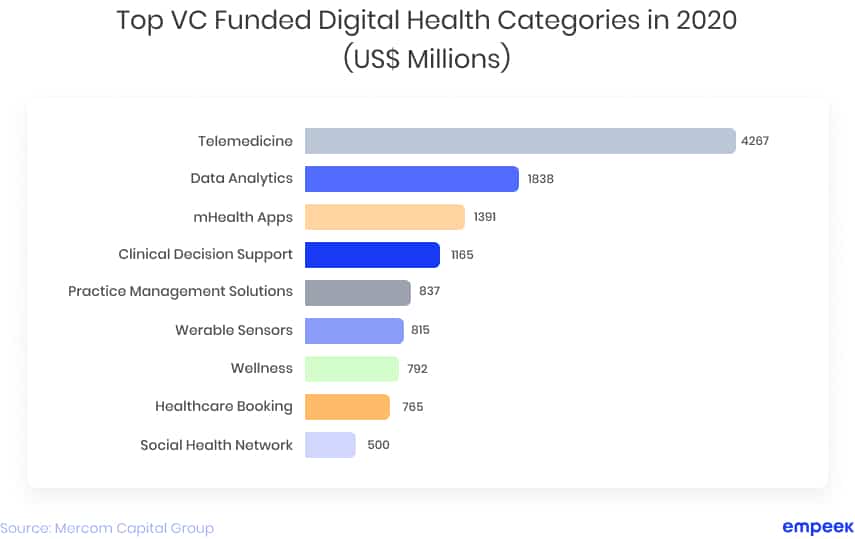
The Core Idea of an mHealth App and Its Specifics
The basic concept of an mhealth app is a tool that is user-friendly and can be easily installed on the customer’s mobile device. Some of them come free, while others demand a monthly/annual fee. The main idea of modern mhealth is autonomy, cost effectiveness, and increased access to medical services for all populations.
- Autonomy. Using an mhealth app doesn’t necessarily mean a doctor-and-patient interaction. Most mhealth apps are designed for personal use, providing patients with more independence in their health decisions;
- Cost-effectiveness. An mhealth tool improves chronic disease management. In turn, the user can timely detect any deterioration, contact the hospital, and receive the medical help that is lower in price and higher in quality;
- Equal access. The core difference in the telemedicine and mhealth fields is the increased accessibility of the latter. While 76% of the lower-middle class Americans have a smartphone, only 59% possess a laptop in the same category.
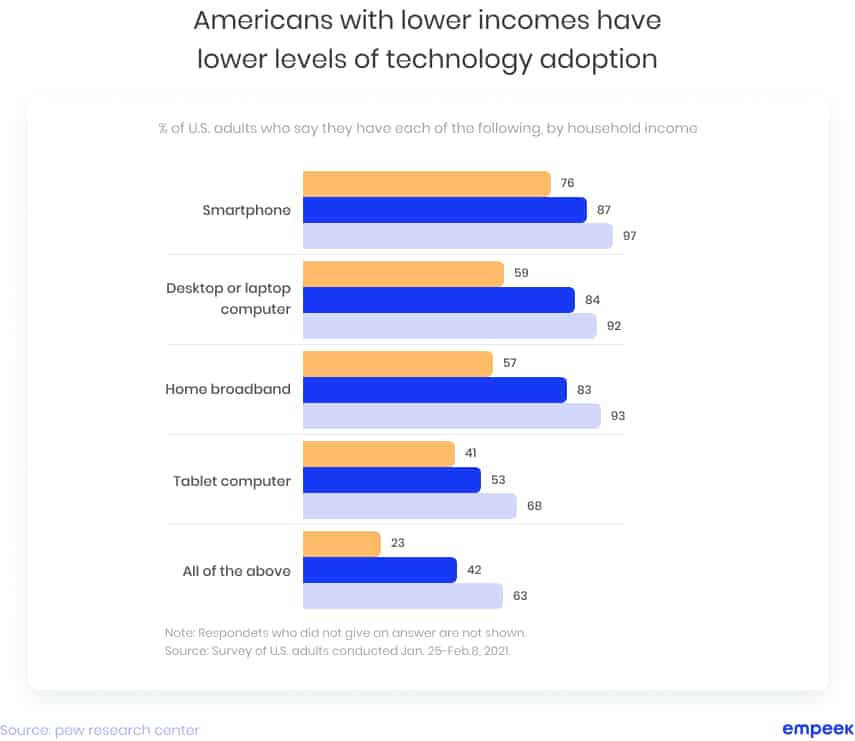
The services an mhealth app development suggests are versatile and can be introduced for a variety of goals. Everything depends on the user’s preference. Check a few of them below.
- Data exchange. With a medical mobile application like myPHR, one can store the health data and later share it with the clinician;
- Chronic disease management. Apps like My Medical ID allow a user to store their data on medications and track their symptoms;
- Remote clinical services. Both Talkspace and BetterHealth do their best at supporting clients in need of remote psychotherapy services;
- In-hospital management. While Trillian offers secure communication to medical teams, DrChrono encourages effective EHR storage, medical billing, and visit scheduling;
- Fitness and wellness management. Apps like MyFitnessPal allow the user to note their daily calories intake and have access to workouts as a part of their weight loss plan. Meanwhile, a wellness app like Insight Timer provides the user with scheduled meditations for mental health improvement.
One of the purposes of mhealth apps is to increase global health awareness. With the use of a mobile app, a patient can monitor chronic diseases and get educated on their condition while seeking doctor-to-patient or patient-to-patient interaction. For instance, women can seek more information on their cycle-related symptoms in the ‘Clue’ app.
Offering timely help is another mhealth development purpose. Daylio Journal, a mood-recording tool, allows users to write down their symptoms and request clinical intervention like counseling once the app shows that the symptoms worsen.
Reducing business costs while enhancing in-hospital and doctor-and-patient communication is the third purpose. By installing EHR management or in-hospital management apps, businesses automate tasks and improve the data flow.
The Basic Idea of a Telehealth App and Its Difference to mHealth
The main aspect to consider in the mhealth and telehealth app comparison is the devices each field uses the most. While the mhealth equipment includes mobile devices, the telehealth equipment ranges from the patient’s laptop to the clinician’s virtual stethoscope. All because the basic concept of telemedicine development is improving the interaction between patients and healthcare providers. Hence, the telemedicine field is based on the following ideas:
- Top-notch remote healthcare services are possible. A remote virtual session can be as effective as a traditional hospital visit;
- Using secure HIPAA-compliant software is real. Such software allows healthcare organizations to safely collect, store, and share patient’s data;
- Telemedicine reduces treatment costs and saves time. A virtual visit is cheaper: a patient doesn’t have to drive their car, while the doctor’s workload is stable due to the reduced delays in visits.
Once we engage in the mhealth and telehealth comparison, we’ll find that their services slightly differ.
- Remote consultations for patients. With telemedicine solutions, scheduling a virtual HIPAA-compliant consultation is a gamechanger. An example is a DocAbode tool that provides seamless communication between patients and healthcare providers;
- Easy management of the appointments by the hospital staff. Telehealth tools allow clinicians to efficiently manage common and referral appointments while having instant access to the patient’s data. For instance, HealthPlix SPOT is a digital EMR platform that simplifies the management of patient data;
- Remote monitoring. Because remote patient monitoring or RPM reduces costs, 80% of healthcare providers actively invest in it. Check Healtharc. As a part of the treatment process, a doctor has access to the real-life health data of a patient, ensuring early symptom detection.
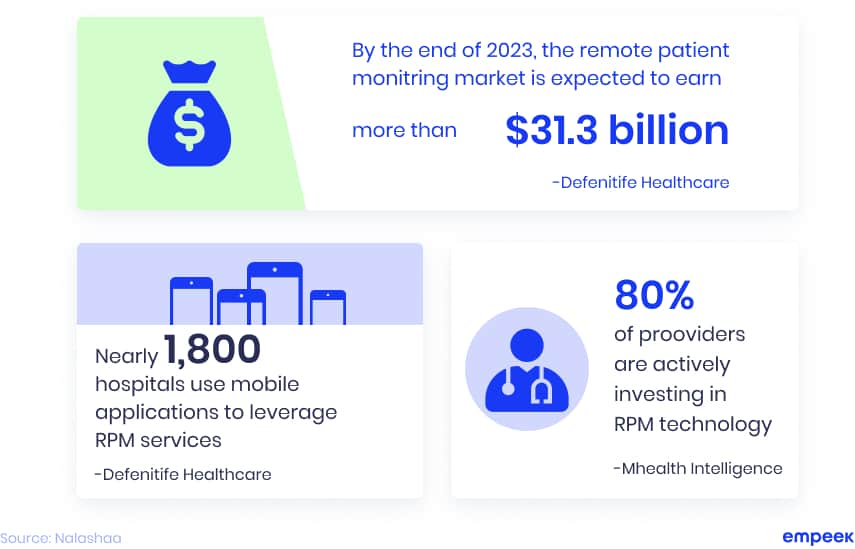
Like any other modern technology, telemedicine has a goal to reduce business costs and improve services. Telehealth cuts travel-related costs if the case is not an emergency. Specialist follow-ups also get faster and cheaper. Meanwhile, the emergency room workload is lower, since the provider can determine whether the in-person visit is required after arranging a quick virtual consultation.
Telemedicine progress is all about access. With innovations come top-notch services that are affordable and easy to request along with sources that increase health literacy in the community.
In turn, this leads to better use of medical resources. For instance, using a telehealth app results in fewer visit delays and readmission rates.
Jumpstart Your Project With Empeek
Get In TouchWhat are the Differences Between mHealth and Telehealth?
Sometimes, tech developers use ‘telemedicine’ as an umbrella term for both mhealth and telehealth. In other cases, ‘telemedicine’ and ‘telehealth’ are used as interchangeable terms. What you must remember is that mhealth and telehealth are different areas with similar purposes. Both fields focus on autonomy, cost-effectiveness, and enhanced access to healthcare services. Meanwhile, the main difference between mhealth and telehealth is the devices used. Using a smartphone in mhealth is enough, while telehealth requires a slight touch of IoT.
Check more mhealth vs telehealth app differences as summarized in the table below.
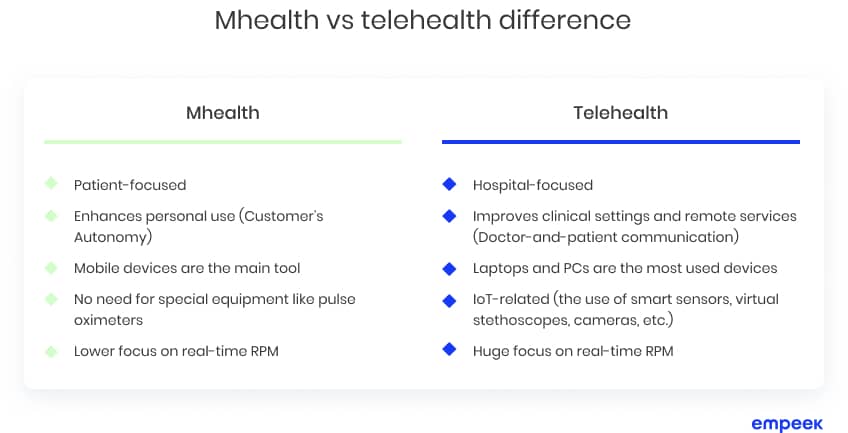
Consider Empeek Your Trusted Partner
Empeek is a team of tech professionals who believe that solving one local healthcare problem strengthens the entire global healthcare system. Our team is a community of experts who specialize in mhealth by developing hospital and wellness apps, remote healthcare apps, and chronic disease management tools among other products. Along with medical device software development, we provide telemedicine solutions for doctors and patients, and RPM tools.
Our recent mhealth and telehealth projects are an IoT-based wireless medical monitoring solution and an improved EHR telehealth system.
In the first project, our team experienced the challenge of creating a cheap lightweight wearable that would allow the doctor to observe the patient’s vital signs in real-time. The solution includes PPG-embedded sensors that send the data to the patient’s app and later the hospital workstation.
The main challenge of the second project was changing the old EHR system of a US-based hospital. During the development process, our team upgraded the medical record input and the authentication and created a telemedicine portal. In the end, the provider could monitor their patients in real-time and offer tele-visits.
Have a tech idea worth a million? Contact our Empeek professionals!

